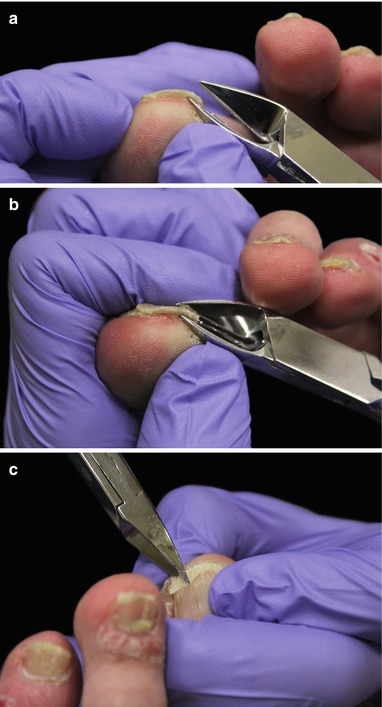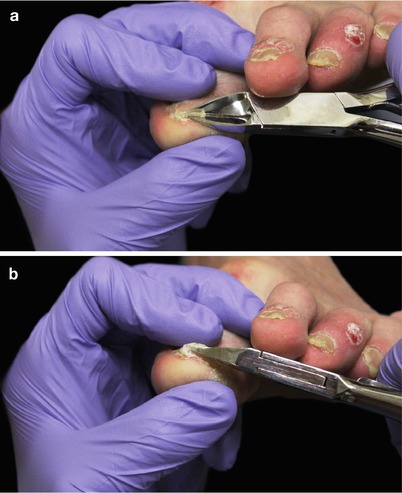Fig. 15.1
Grasping the entire nail plate in shears at one time
Solution 1
Insert shear tips at the lateral nail fold, pointing upward toward the nail plate, and take small bites as the instrument marches across the nail (Fig. 15.2).

Fig. 15.2
March across the nail plate with small bites. (a) Shear tips start pointing up at nail plate. (b) Full closure only clips a small length of nail parallel to the free edge of the plate. (c) If the recently clipped portion obstructs shear advancement, nip it perpendicularly to its insertion for access to the adjacent target segment
Solution 2
Twisting the nail can be an effective alternative to nipping but can be painful (Fig. 15.3).

Fig. 15.3
Twisting technique to facilitate nipping. (a) Grasp the nail with the shears parallel to the free edge of the plate. (b) Supinate the wrist toward the proximal nail fold, twisting and lifting the nail plate upwards from the nail bed rather than cutting. Once a substantial portion of nail is twisted up, one can nip along the base of that portion. The thickest onychomycotic and psoriatic nails are most amenable to the twisting method rather than brute clipping through the full thickness of the nail
Solution 3
Orient the clipper more parallel to the nail plate surface. The inferior cutting edge of the clipper glides proximally along the undersurface of the nail, and the superior edge glides distally along the dorsal surface of the plate as the jaw is closing. It results in a decrease in thickness as the nail is shortened.
Accidents Happen When
Stay updated, free articles. Join our Telegram channel

Full access? Get Clinical Tree








